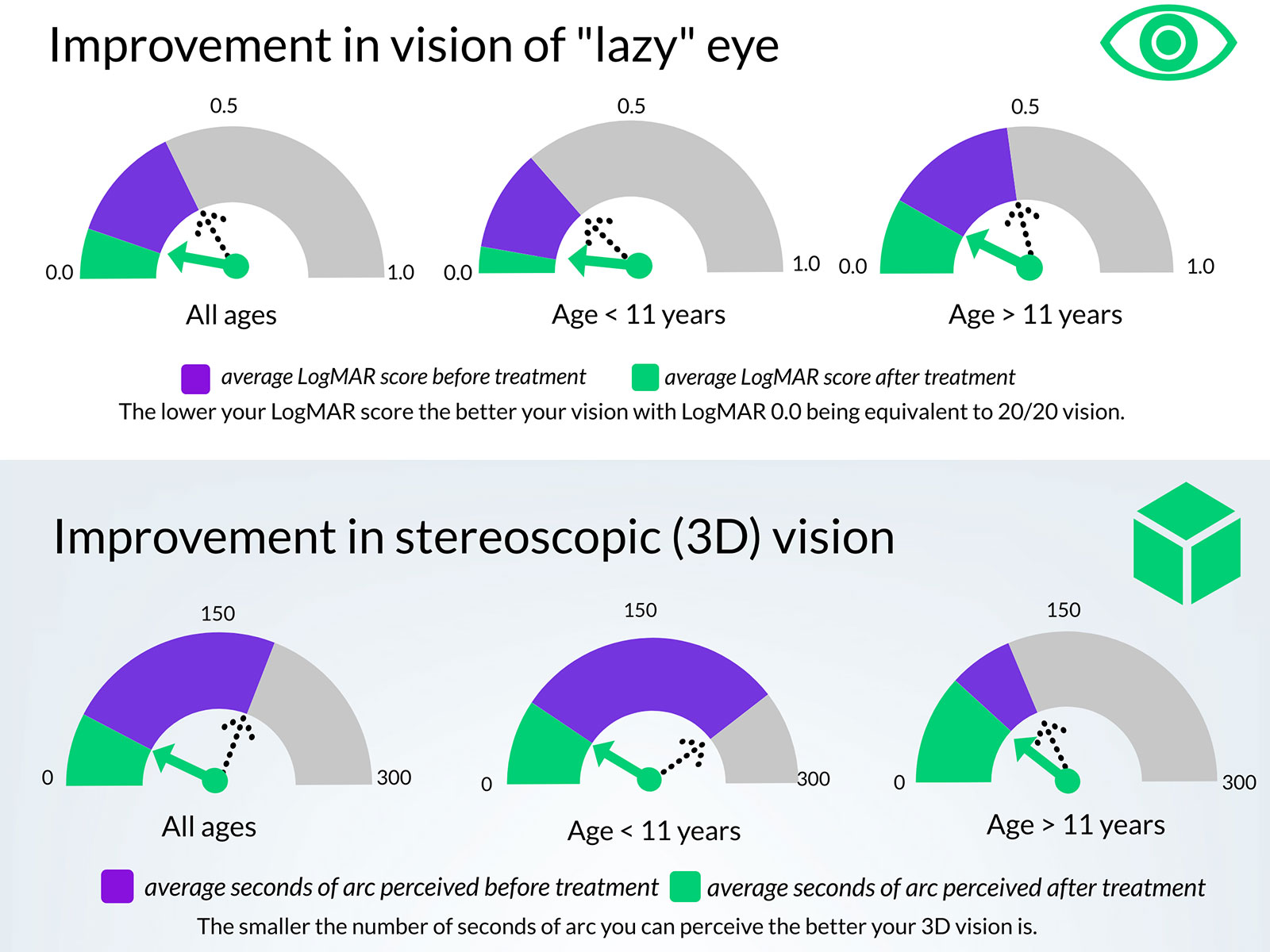Vivid Vision: Curing Lazy Eye with VR + Hand Tracking
Posted; December 31, 2019
Could virtual reality retrain our brains to reverse some types of vision problems? Founded by a former lifelong “lazy eye” sufferer, medical technology firm Vivid Vision has already deployed to hundreds of eye clinics, with startling results in two independent studies.
A five-year journey to become a global medical technology provider
As a child James Blaha suffered from strabismus, commonly known as being “cross-eyed” or “wall-eyed.” As a result, his brain started ignoring input from his non-dominant eye. This left him with incredibly poor vision in that eye and robbed him of depth perception.
James’ condition, known as amblyopia or “lazy eye,” is estimated to affect 1.75% of the population (or around 135 million people worldwide). Early intervention is often the key, as with conventional therapies the condition is very hard to treat beyond 8 years of age.
As an adult, James decided to try retraining his brain using the Leap Motion Controller and VR. Only weeks later, he was able to perceive stereo depth and read with his amblyopic (non-dominant) eye.
After a five-year odyssey his medical technology company, Vivid Vision, is now transforming how eye clinics treat strabismus, amblyopia, and other disorders of binocular vision such as convergence insufficiency.
Standard treatments are beyond boring
Standard behavioural therapies tend (as James puts it) to be “excruciatingly boring.” This has real consequences for patients, especially children, who may not complete treatment courses.
VR and hand tracking also have unique capabilities conventional therapies cannot match. Importantly, VR headsets can show a different image to each eye. Ultraleap's hand tracking makes it possible for patients to interact in 3D – enabling them to practise eye-hand coordination skills in a life-like environment.
How VR medical technology can hack your brain – for good
James Blaha created a game that forces your eyes to work together in order to win. This effectively tricks the player’s brain into strengthening the weaker eye.
Using Ultraleap's hand tracking, the game lets the player navigate various controls and play six different games. These include an asteroid shooter, a 3D variant of the classic Atari game Breakout, and targeting levels that force the user to rely on depth and colour perception. The system has a range of difficulty levels and is suitable for all ages.
Outcomes can be digitally tracked and evaluated over time, giving eye care professionals new tools and greater insight into patient outcomes.
Multiple studies show positive results
A preliminary 2017 study and a more in-depth study published in 2019 showed that Vivid Vision improved both sight in patients’ “lazy” eye, and depth perception.
In the 2019 study, the results were particularly dramatic for the improvement of sight and for children. On the LogMar score (a standard measure, in which LogMAR 0.0 is equivalent to 20/20 vision), the sight of children under 11 in the study improved from an average of LogMAR 0.23 to an average of LogMAR 0.06.
This means that the children came out of the study with close to 20/20 vision in their “lazy” eye.
How Vivid Vision’s VR & hand tracking system restores sight
To date, Vivid Vision’s VR system has been deployed to more than 300 optometry and ophthalmology clinics worldwide. New clinics are being added all the time, and the Vivid Vision team believe their medical technology will ultimately improve the lives of millions of people worldwide.
